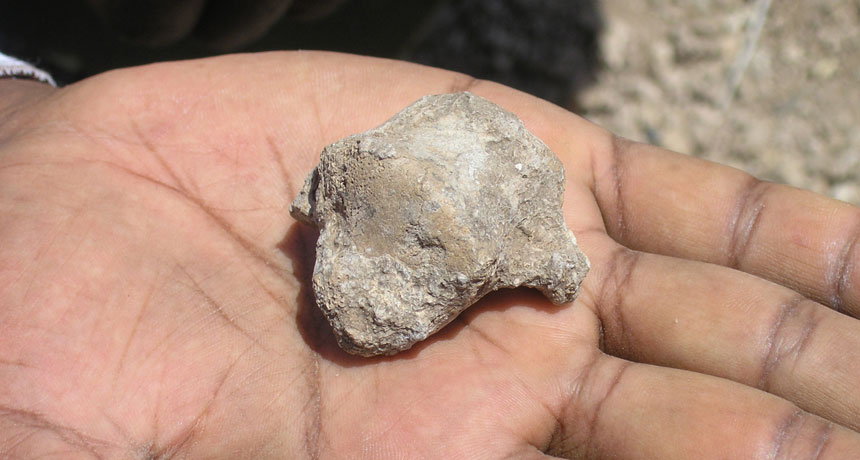African hominid fossils show ancient steps toward a two-legged stride
New cache of Ardipithecus ramidus bones reveals advances in upright walking 4 million years ago

WALKING TALL A researcher holds an Ardipithecus ramidus ankle bone after its discovery at an East African site not far from where Ardi, a partial skeleton of the same species, was found previously.
S.W. Simpson